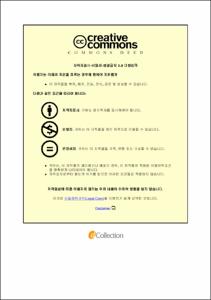Development and validation of a new prognostic model for active cancer patients with suspected infection
- Abstract
- Background and Aims
Cancer has been a major medical condition globally with a substantial socioeconomic impact. Although the incidence and mortality have been decreasing, the prevalence and the complications of cancer patients are still significant. Patients with cancer are more susceptible to infection and have poorer outcomes from infection than the general population. Therefore, it is essential to recognize early before the beginning or the worsening of organ failures and promptly provide proper treatment in cancer patients with suspected infection. This study aimed to develop a new prognostic model for predicting mortality in cancer patients with suspected infection.
Methods
This study is a retrospective cohort study and was conducted from August 2019 to December 2019 at Asan Medical Center, Seoul, Korea. Adult active cancer patients with suspected infection were enrolled among visitors to the Emergency Room (ER). Data were collected by reviewing a medical record. The initial values of vital signs and laboratory findings at ER were used for analysis. Cox proportional-hazards regression analysis was used to identify potential predictors for a new model. The predictive performance was analyzed using receiver operating characteristic (ROC) curves and area under the ROC curve (AUC) values.
Results
A total of 998 patients were included; 500 in the derivation cohort and 498 in the validation cohort. The total patients were followed during a median time of 130 days (range 1-334). A new prognostic model for survival consisted of seven components: Eastern Cooperative Oncology Group (ECOG) performance status (PS), distant metastasis, white blood cell (WBC), prothrombin time (PT), creatinine, albumin, and lactate. Each component was assigned a score as follows: ECOG PS 2 (2 points), ECOGS PS 3-4 (3 points), distant metastasis (2 points), WBC ≧ 10,000/mm3 (1 point), PT ≧ 1.2 international normalized ratio (INR) (1 point), creatinine ≧ 1.2 mg/dL (1 point), lactate ≧ 4.0 mmol/L (1 point), albumin 2.5-3.5 g/dL (2 points), albumin < 2.5 g/dL (4 points). The concordance index of the new model was 0.729 in the internal validation and 0.759 in the temporal validation. In comparison for 30-day and 180-day mortality, the new model was superior to SIRS, qSOFA, and SOFA [AUC for 30-day mortality: 0.828 (95% CI, 0.790-0.867) vs. 0.612 (95% CI, 0.556-0.669) vs. 0.681 (95% CI, 0.624-0.738) vs. 0.752 (95% CI, 0.703-0.801), respectively; AUC for 180-day mortality: 0.810 (95% CI, 0.770-0.849) vs. 0.531 (95% CI, 0 .478-0.583) vs. 0.637 (95% CI, 0.587-0.686) vs. 0.678 (95% CI, 0.630-0.725), respectively]. The total patients were grouped into three according to the new model's total scores: low-risk, intermediate-risk, and high-risk. The low-risk group (scores 0-4) has 3.0-9.8% of 30-day mortality and 12.3-35.7% of 180-day mortality, the intermediate-risk group (scores 5-8) has 13.0-29.3% of 30-day mortality and 45.0-77.4% and 180-day mortality, and the high-risk group (scores 9-13) has 37.5-79.5% of 30-day mortality and 86.77-99.9% of 180-day mortality. The three groups showed markedly significant differences in 30-day and 180-day mortalities (p < 0.001).
Conclusions
The new prognostic model for predicting mortality in cancer with suspected infection consisted of two cancer-specific components, ECOG PS and distant metastasis, and five laboratory variables, WBC, PT, albumin, creatinine, and lactate. The new model was superior to the current severity scoring systems, SIRS, qSOFA, and SOFA.
- Issued Date
- 2021
- Awarded Date
- 2021-02
- Type
- Dissertation
- Keyword
- Suspected infection; Cancer; Mortality; ECOG PS; Distant metastasis; WBC; PT; Creatinine; Albumin; Lactate
- Alternative Author(s)
- Bora Chae
- Affiliation
- 울산대학교
- Department
- 일반대학원 의학전공
- Advisor
- 이윤선
- Degree
- Doctor
- Publisher
- 울산대학교 일반대학원 의학전공
- Language
- eng
- Rights
- 울산대학교 논문은 저작권에 의해 보호받습니다.
- Appears in Collections:
- Medicine > 2. Theses (Ph.D)
- 파일 목록
-
-
Download
 200000368814.pdf
기타 데이터 / 868.85 kB / Adobe PDF
200000368814.pdf
기타 데이터 / 868.85 kB / Adobe PDF
-
Items in Repository are protected by copyright, with all rights reserved, unless otherwise indicated.